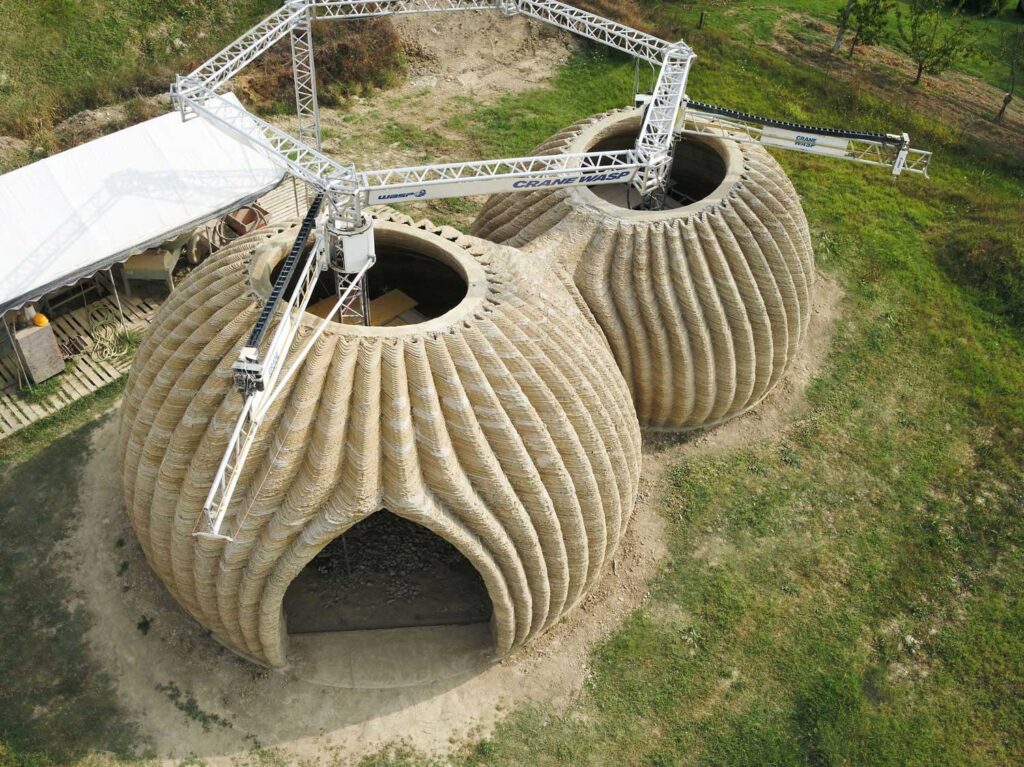
Revolutionising UK Construction: Cranes for 3D Building
The future of construction is here, and it’s being driven by cranes, specifically designed for 3D building. These marvels of engineering are transforming how we approach architecture, making the impossible suddenly very achievable, though you will still need to find the right crane manufacturer to produce one!
You might wonder how these cranes differ from traditional ones. Well, they’re not just lifting heavy materials; they’re part of an intricate dance with 3D printing technology. This synergy allows for faster, more precise construction, cutting down on both time and costs. As the UK embraces this innovative approach, it’s clear that the landscape of our cities is set for a dramatic change.
Overview Of Cranes For 3D Building
Cranes for 3D building symbolise innovation in construction. They’re altering old methods, bringing speed and precision with them. These cranes collaborate with 3D printers, transforming how structures rise. Have you ever thought about the vast metal arms lifting layers, building walls faster than before? That’s the magic here.
In the UK, this technology is gaining ground. It’s not just about being modern. Companies see the benefits such as reduced costs and shortened timelines. Picture a skyline filled with tall, gleaming buildings erected in a fraction of the usual time. That future is closer than you think with cranes designed for 3D building.
Why is this happening? Efficiency. These cranes move materials smoothly, thanks to their precise control systems. It makes each drop of concrete or layer of metal count. No wasted effort means leaner, quicker projects. If you’re managing timelines and budgets, this is extremely useful.
Think about safety. Traditional cranes come with risks, like heavy loads swaying. Cranes for 3D building mitigate many dangers. Their movements are controlled, reducing accidents significantly. Isn’t it reassuring to know that safety standards can rise along with the buildings?
You might wonder how these cranes operate. It’s complex yet fascinating. Advanced software guides every motion, ensuring each layer aligns perfectly. High-tech sensors monitor everything, adjusting for any deviations. So, what you get is a seamless build process that’s almost flawless.
You should also consider the crane’s reach. Traditional cranes have limits, but these new cranes stretch beyond them. They can build in tighter spaces, ideal for urban settings. Have you noticed how cities are always growing? This technology adapts to those needs, building where it once seemed impossible.
Cranes for 3D building are also eco-friendly. They reduce waste by using materials more efficiently. Sustainability matters, especially with growing environmental concerns. The less waste on a construction site, the greener the project.
Curious about future prospects? This tech isn’t just a trend. It’s the future. More countries might follow the UK’s lead. Do you see how it could change global construction? Fast, safe, and sustainable projects could become the norm.
Are you captivated by these advancements? The UK’s progress with cranes for 3D building could be just the beginning of a global shift. As you reflect on this technology, think about the buildings shaping tomorrow’s cities. They may owe their existence to the cranes of today.
Types Of Cranes Used In 3D Building
In 3D building, cranes play a vital role in efficiently handling construction materials. These cranes differ based on their specific application and setting.
Tower Cranes
Tower cranes are essential for tall structures. They offer a high lifting capacity and can reach impressive heights. Imagine working on a skyscraper; this crane can rotate 360 degrees, ensuring materials get exactly where they need to. They’re anchored securely to the ground, providing stability even under challenging conditions. In busy urban areas, tower cranes can operate above crowded streets and buildings, avoiding disruptions. Their integration with 3D printing systems ensures materials are lifted swiftly and placed with precision.
Mobile Cranes
Mobile cranes provide versatility in construction projects. Mounted on wheels or tracks, these cranes can move around sites with ease, enabling you to tackle multiple tasks without the hassle of setting up anew. These cranes can lift heavy loads over short distances, making them ideal for dynamic environments. Their quick setup and flexibility in figuring uneven terrain ensure great adaptability, especially in areas with limited space. Imagine transferring materials directly to designated spots, reducing manual handling and speeding up the construction process.
Gantry Cranes
Gantry cranes, often used in shipyards and factories, also serve well in 3D building. They consist of a bridge supported by legs that move on rails, providing stability and precision. Picture lifting heavy prefab components and placing them accurately; gantry cranes make this possible. They can work indoors and outdoors, adapting to various construction settings. Their capability to handle bulky items seamlessly integrates with 3D printing operations, ensuring components are positioned correctly, enhancing overall efficiency. These cranes are ideal for projects requiring repetitive precise lifting.
Key Features And Specifications
Modern cranes designed for 3D building come packed with impressive features. These machines play a crucial role in revolutionising construction by ensuring precision, efficiency, and safety.
Load Capacity
When selecting a crane, load capacity stands as a key factor. Cranes for 3D building often handle large materials like prefabricated panels and heavy 3D printed components. Consider a crane with a capacity matching your project’s heaviest loads. Some of these cranes manage weights up to 300 tonnes, such as certain tower cranes. Ensuring proper load management can prevent accidents and enhance workflow efficiency.
Reach And Height
Cranes involved in 3D building need considerable reach and height capabilities. They must position elements accurately at significant heights, particularly in urban settings. Tower cranes, essential for tall building projects, often reach heights over 80 meters. Meanwhile, mobile cranes provide flexible reach for various construction needs. Adequate reach and height ensure materials are placed precisely where required, aiding in smooth construction processes.
Mobility
Mobility in cranes for 3D building enables flexibility on the construction site. Mobile cranes stand out due to their adaptability. They can be moved effortlessly, making them ideal for dynamic projects. Gantry cranes, though less mobile, provide exceptional stability when handling heavy components. Evaluate your project requirements to choose a crane that balances mobility with stability, ensuring optimal performance on-site.
Advantages Of Using Cranes In 3D Building
Modern cranes revolutionise 3D building. Their integration enhances speed, precision, and safety on construction sites.
Efficiency
Cranes boost efficiency by handling tasks swiftly. They work seamlessly with 3D printers to place materials where needed. This reduces build time significantly. Want to see faster construction progress? Cranes make it happen. Reduced manual labour means fewer delays and increased productivity. Your projects finish quicker, saving both time and money. The crane’s precision makes complex tasks simpler and faster.
Precision
Cranes provide unmatched precision in 3D building. Advanced control systems ensure materials are placed exactly where they should be. Ever thought about the accuracy needed? Cranes deliver that level of detail. They follow intricate designs without error, ensuring every component fits perfectly. This precision minimises waste and maximises resource use. Cranes bring design visions to life with exactitude, making your structures flawless.
Safety
Safety is paramount in construction. Cranes enhance safety by reducing the need for manual handling of heavy materials. They operate with advanced safety features to lower risks. Curious about how they manage this? Cranes come equipped with sensors and automated systems that detect potential hazards. This proactive approach protects workers and the project alike. Using cranes means a safer, more secure construction environment, letting you focus on quality.
Final Thoughts
Embracing cranes for 3D building in the UK construction industry offers significant benefits. These advanced cranes work seamlessly with 3D printing technology to speed up construction processes and ensure precise material placement. Though there are challenges such as cost, maintenance, and operator training, the long-term financial advantages and improved safety features make them worthwhile investments. By focusing on the integration of these cranes with 3D printing systems and addressing technical requirements, you can optimise your construction projects and minimise downtime.






